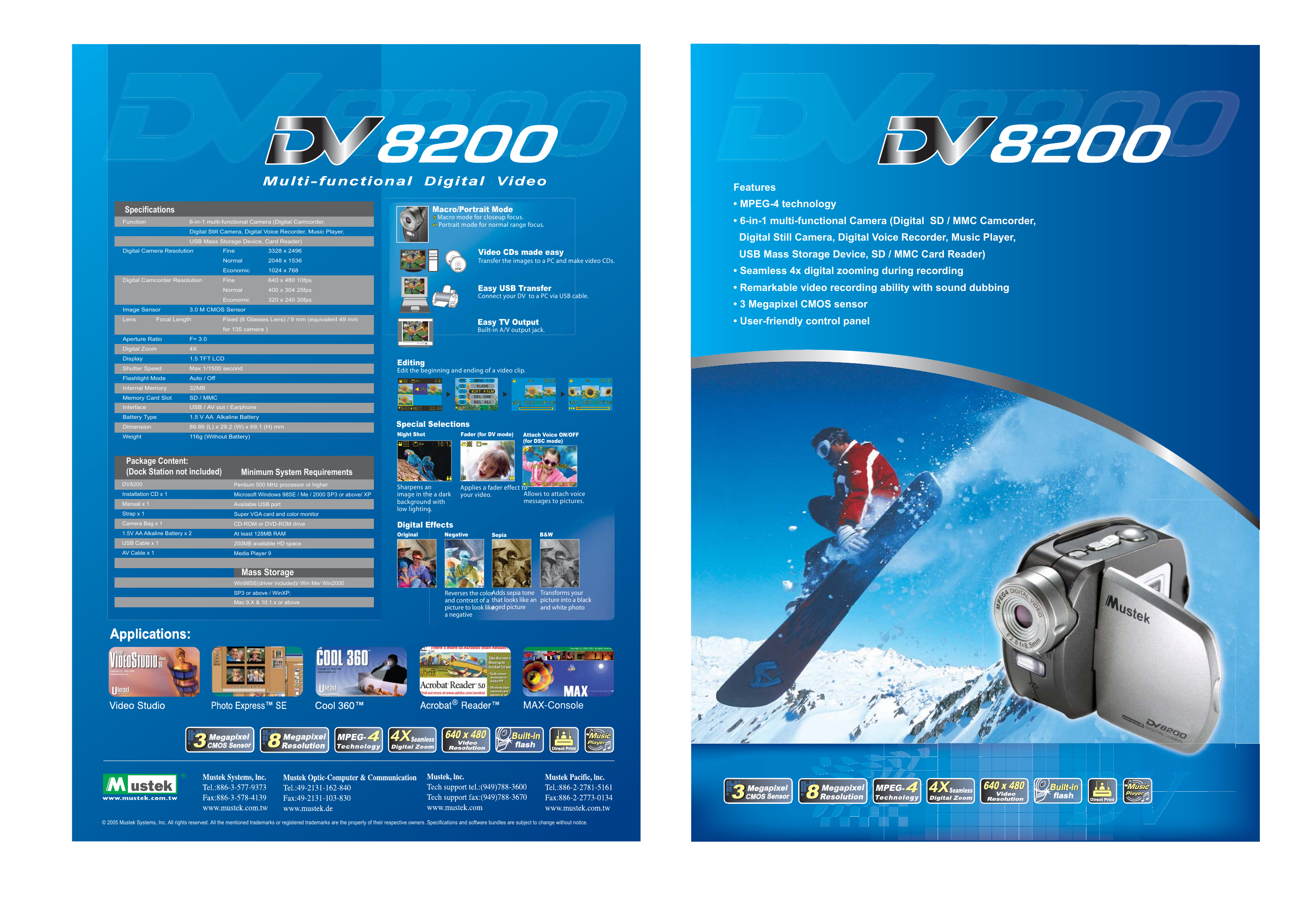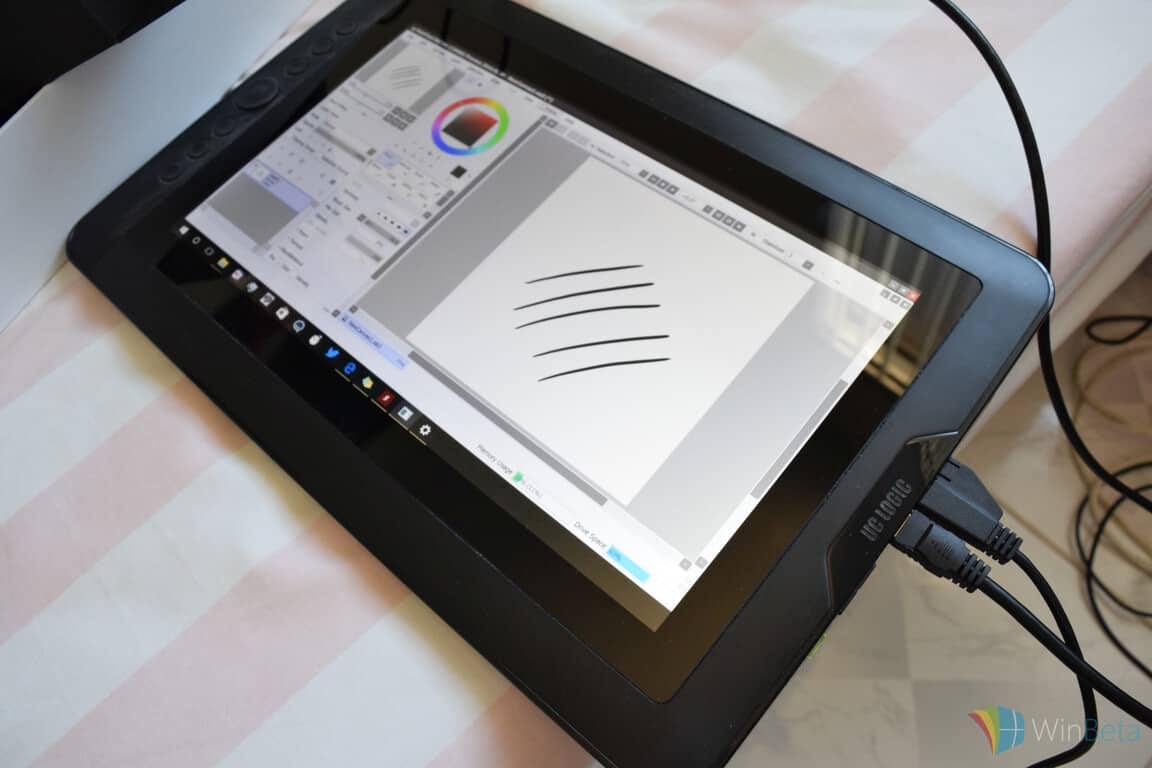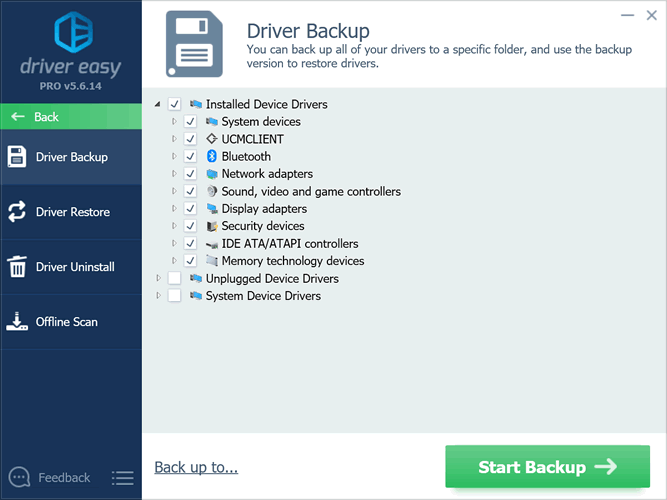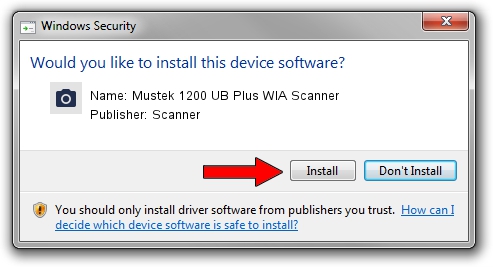To confirm it is the right scanner for these drivers and instructions, check in Windows Device Manager. It should be shown as “USB Scanner” in “Other Devices” with an exclamation mark icon indicating no driver. Check the device properties and it should have these Hardware IDs: USB VID055F&PID0210&REV0100; USB VID055F&PID0210. Mustek Systems, Inc. SNAPSCAN e22 USB VID055f&PID021f Select the driver for your operating system and its bit. It is recommended to install a later version of the driver (see the release date). Driver scanner Mustek 1200 UB is a driver especially designed for the owner of scanner Mustek 1200 UB series. After installing this driver, they can now enjoy the entire features of the machine that were locked before. The advantage of using the driver is that it allows the user to adapt the computer's USB port to recognize the scanner's USB. Click Browse and locate the USB driver folder. (The Google USB Driver is located in androidsdk extras google usbdriver.) Click Next to install the driver. Or, to upgrade an existing Android USB driver on Windows 7 and higher with the new driver: Connect your Android device to your computer's USB port.
Feb 02, 2021 • Filed to: USB Recovery • Proven solutions
How to fix USB device not recognized in Windows 10?The error message is 'The lastUSB device you connected to this computer malfunctioned, and Windows does not recognize it.' This is the most common USB problem for many users who using Windows 10 system computer. In the following guide, we will list the best solution to solve the USB device not recognized errors. Different types of problems may arise when using drives on Windows 10 and some of them are:
Problems about USB device not recognized windows 10:
- External hard drive not recognized by Windows 10:This problem often affects both the external hard drive and the flash drive and to resolve both issues, you can apply the same method.
- USB may not be detected by Windows 10:Another very common problem is when your Windows 10 software can't seem to detect your USB flash when plugged in.
- USB hard drive not showing:Some users complain that when they connect their drives to their computer, it doesn't display on the screen. This problem is not without a solution.
- USB drive not working:You drive may show on your screen but may not function. Such a problem is not peculiar to you alone as many other users of Windows 10 complain of the same problem.
- Windows USB port non-functional:If your USB port is not functioning, there's no way you can transfer data from one source to the other. You can resolve all the problems highlighted in this article using our tested and trusted technology solutions.
Part 1. How to fix a Windows 10 doesn't recognize USB Port
Solution 1 – Check Power Management for USB root Hub

One way to fix a Windows 10 problem of this spec is to tweak the power management structure of your USB root hub. Here is how to go about it.
- Open yourDevice Managerand go to the section 'Universal Serial Bus Control' to find the USB Hub. For multipleUSB Root Hub, you have to repeat the procedure for each of them (Three USB Root Hub).
- Right-click the USB Root Hub/select Properties.
- Proceed to thePower Managementtab. Uncheck 'Allow the computer to turn off this device to save power'.
- Save changes and repeat these steps for all Root Hubs on your device Manager.
Solution 2 – Install drivers for Generic USB Hub
- Open yourDevice Managerand look forthe Generic USB Hub. Right-click the icon toupdate the driver.
- Select 'Browse my PC for a driver for driver software'.
- Select 'Let me pick from a list of drivers on my PC'
- ChooseGeneric USB Huband tap the Next button.
- To get the very best results, you can conduct these same steps for all theUniversal Bus Controllers on your Device Manager.
Solution 3 – Change USB Selective Suspend Settings
Another option you can try when experiencing USB not recognized Windows 10 problems is to change the USB selection suspend settings. Here is how to go about effecting changes.
- Open Control Panel and choose Power Options.
- Click 'Change Plan Setting' on the Power Saver section
- Then click 'Change advanced power settings'
- Find theUSB Settingoption, then select 'Disable'
Solution 4 – Reconnect your USB devices
When you try to connect the USB ports to the computer and get the error message pop up, you might want to reconnect your USB devices. This action may solve your USB device not recognized problem in Windows 10.
Video Tutorial on How to Fix USB Device Not Recognized
Part 2. How to Fix Windows 10 doesn't Recognize USB Drive/Storage
If the problem you are experiencing has to do with your Windows 10 application not recognizing the USB drive or storage you used, follow these steps to rectify the problem.
Solution 1 – Turn off Fast Startup
- Go toControl Paneland selectPower options
- Then click onChoose what the power button does
- By clickChange settings that are currently unavailable
- Then uncheckTurn on fast startup(recommend)option and click onSave Changes
Solution 2 – Update your drivers / install the default driver
If you get the USB device not recognized error, you may need to uninstall your currently installed drive. You can follow the next steps to allow Windows 10 to install the default drive:
- Go toDevice Managerwindows by pressing Windows Key + X or search the keyword on the search bar.
- SelectDisk drivesoption, then right-click on your USB device and selectUninstall device
- Restart your computer after the driver has been uninstalled
- Reconnect your USB drive when your PC starts.
Solution 3 – Partition your USB storage and assign a letter to it
While you connect the USB device to the Windows 10 computer, the device needs to partition and assign a letter to it. Follow these steps to do that:
- Hold down the Windows + S key, type in the word 'Computer management' and pick computer management from the options provided.
- Once computer management comes up, click onDisk management.
- Find your hard drive (To do so, check through the sizes of drives in your drive management system)
If your drive is not partitioned, you will see at least one drive in particular with an unallocated space to it. Right-click the icon and pick the item 'New simple volume'. Now follow these steps to partition it.
- On theDisk Managementwindow and find your USB hard drive, right-click on the drive and selectChange Drive Letter and Paths
- Click onAddand make sure you assign a particular letter to the partition.
*Do note that your Windows 10 only works with NTFS & FAT32 systems so during the process of partitioning, only use an NTFS system file.
*Also note that you can also partition your hard drive using any third-party app.

Solution 4 – Uninstall hidden devices from Device Manager
If your USB device did not recognize Windows 10 problems can be caused by devices that were hidden in your Device Manager. To get it working again you may need to uninstall them. Follow these instructions to do that.

- Press your keyboardWindows key + Rand input the letters 'cmd' and press OK.
- Once the command prompt comes up, paste these lines below and click ok after each line to run them through.
- set devmgr_show_nonpresent_devices=1
- cd
- cd windowssystem32
- start devmgmt.msc
After doing this, your Device Manager will be able to fully display hidden devices in your drive
- Expand all the sections and make sure you delete all gray entries
- Restart your computer and reconnect your hard drive.
Solution 5 – Delete Unrecognized device from Device Manager and assign a different letter to your USB hard drive
To delete unrecognizable devices from your Device Manager and assign a letter to it, follow these steps.
- Go to theUniversal Serial controllerafter opening your system'Device Manager.
- Expand the Controller section and locate all Unrecognized devices. On the Unrecognized devices, Right-click to pick the item 'uninstall device'.
- Press the scan button to scan for available hardware changes.
- Close yourDevice Manager
- Select your computer management portal and navigate to Disk management by pressingWindows key + S
- Locate your USB hard drive storage and right-click to pick 'Change system's hard Drive Letter and Paths'
- Press the Change button and assign a letter to the USB drive.
- Should you not see any unrecognized devices in your Manager, skip the last step and just try replacing the old letter with a new one.
Solution 6 – Connect your USB hard drive to the USB ports in the back
If you are having issues with a USB drive such as the Seagate modeled USB drive it may be as a result of the fact that you connect yours to the front port rather than the back. You may also experience the same problem of an unrecognizable hard drive even if you don't make use of a hard drive that is like Seagate's. There are claims that some ports don't have enough power are the front of computer systems. If this claim is true, you may want to consider connecting your hard drive to the backport to see if it works. Also, avoid using a hub for connection. It is better when you connect directly.
Solution 7 – Replace the hard drive letter using the Diskpart tool
Another way to replace the hard drive letter is to use aDiskpart tool. Here is how to use it to correct a USB device not recognized Windows 10 problem.
- Typedisparton the run box by pressingWindows Key + R.
- Once the command prompt opens up, type the list volume than tap the Enter key to run command.
- Identify your exact USB storage file amongst the list.
- We advise you to choose 'Select Volume 2' because it is much easier to use this prompt. Tap Enter to proceed.
- Close the command prompt and see if your hard drive is recognizable
USB device not recognized Windows 10may be as a result of undetected external hard drives, your drive not showing or may not even work at all. These problems can be resolved however with any of the 7 solutions listed above. One solution may work but in some cases, you may have to use more than one solution to resolve issues. The more suggestion that you should back up your USB data to a safety device or it will cause your data files to get lost. Once data loss happens, you need aUSB data recoveryprogram to help you retrieve all data back easily.
Recoverit Free USB Data Recovery for Computer
- Recover lost data files from USB drive on Windows 10 easily.
- Data recovery from any storage device on Windows computer and Mac.
- Recover lost data files due to Windows computer crashed.
USB Topic
- Recover USB Drive
- Format USB Drive
- Fix/Repair USB Drive
- Know USB Drive
If you are developing on Windows and want to connect a device for testing,then you need to install the appropriate USB driver. This pageprovides links to the web sites for several original equipment manufacturers (OEMs),where you can download the appropriate USB driver for your device.
If you're developing on Mac OS X or Linux, then you shouldn't need a USB driver.Instead read Using Hardware Devices.
To connect and debug with any of the Google Nexus devices using Windows, youneed to install the Google USB driver.
Install a USB driver
First, find the appropriate driver for your device from the OEM driverstable below.
Once you've downloaded your USB driver, follow the instructions below to install or upgrade thedriver, based on your version of Windows and whether you're installing for the first timeor upgrading an existing driver. Then see Using Hardware Devices forother important information about using an Android device fordevelopment.
Caution:You may make changes to android_winusb.inf file found insideusb_driver (for example, to add support for other devices),however, this will lead to security warnings when you install or upgrade thedriver. Making any other changes to the driver files may break the installationprocess.
Windows 10
To install the Android USB driver on Windows 10 for the first time, do the following:
- Connect your Android device to your computer's USB port.
- From Windows Explorer, open Computer Management.
- In the Computer Management left pane, select Device Manager.
- In the Device Manager right pane, locate and expand Portable Devices or Other Devices, depending on which one you see.
- Right-click the name of the device you connected, and then select Update Driver Software.
- In the Hardware Update wizard, select Browse my computer for driver software and click Next.
- Click Browse and then locate the USB driver folder. For example, the Google USB Driver is located in
android_sdkextrasgoogleusb_driver. - Click Next to install the driver.
Windows 8.1
To install the Android USB driver on Windows 8.1 for the first time, do the following:
- Connect your Android device to your computer's USB port.
- Access search, as follows:
Touch screen: On your computer, swipe in from the right edge of the screen and tap Search.
Using a mouse: Point to the lower-right corner of the screen, move the mouse pointer up, and then click Search.
- In the search box, type into and then click Device Manager.
- Double-click the device category, and then double-click the device you want.
- Click the Driver tab, click Update Driver, and follow the instructions.
Windows 7
To install the Android USB driver on Windows 7 for the first time, do the following:
- Connect your Android device to your computer's USB port.
- Right-click on Computer from your desktop or Windows Explorer, and select Manage.
- Select Devices in the left pane.
- Locate and expand Other device in the right pane.
- Right-click the device name (such as Nexus S) and select Update Driver Software. This will launch the Hardware Update Wizard.
- Select Browse my computer for driver software and click Next.
- Click Browse and locate the USB driver folder. (The Google USBDriver is located in
android_sdkextrasgoogleusb_driver.) - Click Next to install the driver.
Mustek Usb Devices Driver Download

Or, to upgrade an existing Android USB driver on Windows 7 and higher with the newdriver:
- Connect your Android device to your computer's USB port.
- Right-click on Computer from your desktop or Windows Explorer, and select Manage.
- Select Device Manager in the left pane of the Computer Management window.
- Locate and expand Android Phone in the right pane.
- Right-click on Android Composite ADB Interface and select Update Driver. This will launch the Hardware Update Wizard.
- Select Install from a list or specific location and click Next.
- Select Search for the best driver in these locations; uncheckSearch removable media; and check Include this location in thesearch.
- Click Browse and locate the USB driver folder. (The Google USBDriver is located in
android_sdkextrasgoogleusb_driver.) - Click Next to upgrade the driver.
Mustek Usb Devices Driver Downloads
Get OEM drivers
| OEM | Driver URL |
|---|---|
| Acer | http://www.acer.com/worldwide/support/ |
| alcatel one touch | http://www.alcatelonetouch.com/global-en/support/ |
| Asus | https://www.asus.com/support/Download-Center/ |
| Blackberry | https://swdownloads.blackberry.com/Downloads/entry.do?code=4EE0932F46276313B51570F46266A608 |
| Dell | http://support.dell.com/support/downloads/index.aspx?c=us&cs=19&l=en&s=dhs&~ck=anavml |
| Fujitsu | http://www.fmworld.net/product/phone/sp/android/develop/ |
| HTC | http://www.htc.com/support |
| Huawei | http://consumer.huawei.com/en/support/index.htm |
| Intel | http://www.intel.com/software/android |
| Kyocera | http://www.kyocera-wireless.com/support/phone_drivers.htm |
| Lenovo | http://support.lenovo.com/us/en/GlobalProductSelector |
| LGE | http://www.lg.com/us/support/software-firmware |
| Motorola | https://motorola-global-portal.custhelp.com/app/answers/detail/a_id/88481/ |
| MTK | http://online.mediatek.com/Public%20Documents/MTK_Android_USB_Driver.zip (ZIP download) |
| Samsung | http://developer.samsung.com/galaxy/others/android-usb-driver-for-windows |
| Sharp | http://k-tai.sharp.co.jp/support/ |
| Sony Mobile Communications | http://developer.sonymobile.com/downloads/drivers/ |
| Toshiba | http://support.toshiba.com/sscontent?docId=4001814 |
| Xiaomi | http://www.xiaomi.com/c/driver/index.html |
| ZTE | http://support.zte.com.cn/support/news/NewsDetail.aspx?newsId=1000442 |

Mustek Usb Devices Drivers
If you don't see a link for the manufacturer of your device here, go to the support section of the manufacturer's website and search for USB driver downloads for your device.
